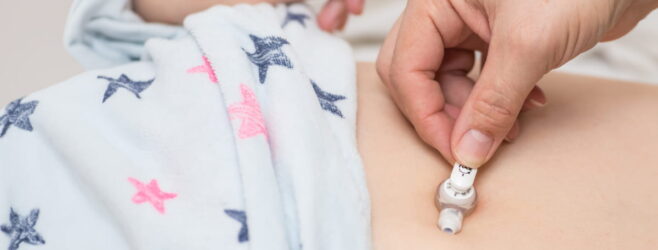Children with cerebral palsy and other birth injuries may be more likely to suffer from issues using their mouth, throat, and neck muscles, causing difficulties with chewing and swallowing. This means they may need support through enteral feeding tubes to get proper nutrition and hydration.
An enteral feeding tube is inserted directly into the stomach or brought through the nose and into the stomach in a procedure called a gastronomy. It sends food, medications, and water past the esophagus and right into the stomach.
Enteral feeding tubes are just one type of cerebral palsy treatment or accommodation you may need to make for your child.
Feeding tubes and related medical care can be expensive. Thankfully, you may be eligible for financial assistance if your child’s health condition can be linked to medical negligence. Contact us now to see how we can help.
The Risk of Dehydration With Feeding Tubes
Unfortunately, feeding tubes often come with an increased risk of dehydration. Hydration is often overlooked since feeding tubes primarily focus on caloric intake.
Some children who use feeding tubes may be nonverbal or have speech disorders, so they cannot effectively communicate that they are thirsty. They may also be unable to swallow water without the support of their feeding tubes. These factors can greatly increase their risk of becoming dehydrated, which can have serious consequences on their overall health.
For these reasons, it is very important that parents and caregivers maintain proper hydration throughout enteral tube feeding.
Why People With Cerebral Palsy Are More At Risk
Water allows our bodies to absorb essential vitamins and nutrients like B vitamins, vitamin C, thiamin, riboflavin, niacin, biotin, and more.
Children with cerebral palsy may be more prone to dehydration because some medications prescribed to manage symptoms can affect vitamin intake. For example, seizure medications may decrease the amount of vitamins absorbed by the body.
Additionally, water keeps joints, tissues, and muscles flexible to help with movement, according to the Mayo Clinic. Without proper hydration, muscle movements that are already difficult may become even more challenging.
Remember, proper hydration and vitamin levels are essential for all children with cerebral palsy, but especially for those needing further assistance through enteral tube feeding.
Providing proper care for children with CP can come with expenses many families weren’t expecting.
You and your family may be eligible for financial assistance if your child’s disability was caused by medical malpractice. This compensation can help pay for feeding tubes and other treatment needs. See if you qualify with a free case review today.
How Do I Know If My Child Is Getting Enough Water?
The amount of water your child requires can vary depending on their age and weight. It is also important to consider any factors that may decrease your child’s hydration levels, such as living in a dry, hot climate.
According to the Children’s Hospital of Orange County, the general rule is half an ounce of water per pound.
Another helpful way to estimate how much water your child should have is to add 8 ounces of water for each year. For example, a 2-year-old child weighing 24 pounds should have between 12 and 16 ounces of water per day.
Parents and caregivers should closely monitor for signs of dehydration.
Some symptoms of dehydration to keep an eye out for include:
- Changes in urine, such as dark yellow color and strong smell
- Constipation
- Dry membranes in the mouth
- Mood changes like irritability, restlessness, and lethargy
- No tears when crying
- Sunken eyes
Depending on your doctor’s advice, incorporating foods with high water content can also help your child stay hydrated. According to Cleveland Clinic, foods with the highest water content include cucumbers, celery, zucchini, watermelon, strawberries, iceberg lettuce, and cauliflower.
Cerebral Palsy Feeding Tube Cleaning and Maintenance
An important part of maintaining an enteral feeding tube is keeping the device clean. One way to do this is through flushing, where water is sent through the tube before and after a feeding session.
Not only does flushing help keep the tube clear of blockages, but it also ensures all food, formula, and medications are delivered along with an additional hydration boost.
The type of water used to flush your child’s feeding tube can vary by their specific needs:
- Tap water: Used when flushing a gastrostomy tube. Tap water is safe for most enteral feeding tube patients unless otherwise specified.
- Purified water: Used when flushing a jejunostomy tube, mixing powder formula, diluting medications, or if your child has a weakened immune system.
Get Help Paying for Feeding Tubes and Other Equipment
Enteral feeding tubes and other accommodations can be expensive.
In fact, a 2001 study found that one year of using a feeding tube device cost more than $31,000. Adjusting for inflation, this cost is more than $52,000 annually.
These expenses, along with the cost of other cerebral palsy treatments, can be overwhelming for families.
In some cases, parents may be entitled to financial aid to help pay for treatments and other expenses. The average settlement for birth injury lawsuits is $1 million — a life-changing amount for families and their children.
Contact our Patient Advocates at (800) 914-1562 today to get connected with legal help.



